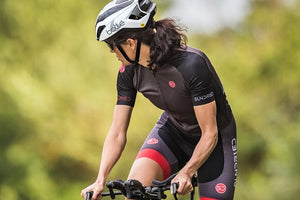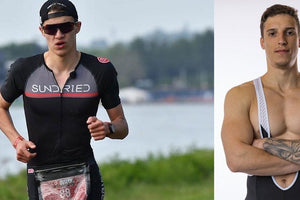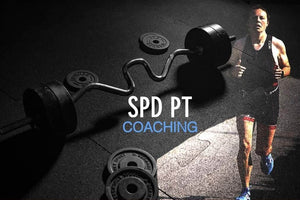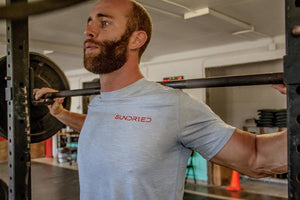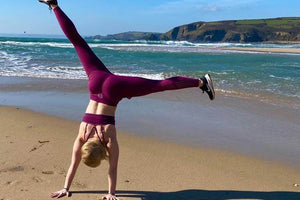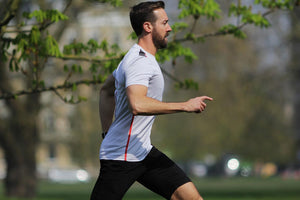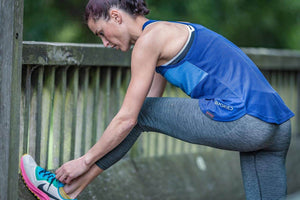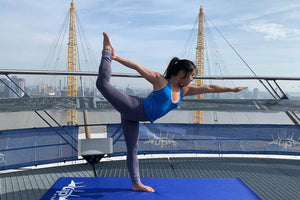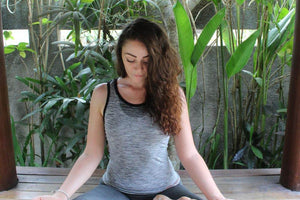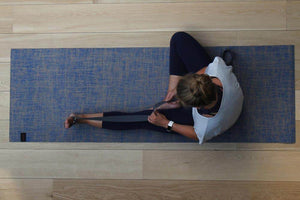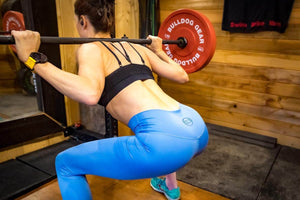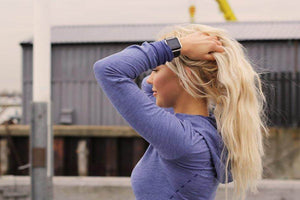The Unstoppable Rise of the Hybrid Athlete: A Deep Dive into Hyrox and the New World of Fitness Racing
For years, you've put in the work. You've hit the gym, lifted the weights, pounded the treadmill, and pushed your limits. But have you ever stopped mid-session and wondered, “What am I actually training for?”
If that question resonates, you're not alone. For decades, the primary goals for most gym-goers were aesthetics or general health. But today, the ground is shifting. We're in a new era of fitness, one where the gym is no longer just a place to work out—it's a training ground for a sport.
This is the era of the hybrid athlete: a new breed of fitness enthusiast who refuses to be boxed in. You're not just a runner. You're not just a weightlifter. You are both. You pursue proficiency across the entire spectrum of physical preparedness, blending the raw endurance of a marathoner with the functional strength of a seasoned lifter.
This evolution has sparked a demand for a new kind of competition, one that gives purpose to every burpee, every lunge, and every kilometre clocked on the treadmill.
Enter Hyrox.
More than just another event, Hyrox has positioned itself as the definitive, world-leading brand in "fitness racing." It provides a powerful answer to that question millions of us have asked ourselves in the gym. And its growth has been nothing short of explosive.
This article is your ultimate guide to the Hyrox phenomenon. We'll deconstruct its brilliant strategy, break down its gruelling race format, uncover the secrets to its global popularity, and see how it stacks up against other fitness competitions. Whether you're a seasoned athlete, a curious coach, or someone looking for their next big challenge, this is everything you need to know about the future of participatory sport.
Section 1: The Spark That Ignited a Global Movement 🔥
The Founders' Vision: Finding the Gap in the Market
Hyrox wasn't a happy accident. It was a calculated, brilliant response to a massive, unserved gap in the fitness market. The event was conceived by a team with a unique blend of sports and business acumen: Christian Toetzke, a veteran organiser of mass-participation events like marathons and triathlons, and Moritz Fürste, a three-time German Olympic gold medallist in field hockey.
Their lightbulb moment came from a startling piece of market research: over 50% of people in Germany considered "working out" their main sport. Yet, unlike runners who have marathons or tennis players who have tournaments, this huge demographic had no globally recognised, accessible, or standardised competition to call their own.
Toetzke saw millions of dedicated gym members training day-in and day-out with no unifying goal. He realised that the gamification of competition is what gives sports like running their purpose and longevity. Hyrox was meticulously designed to be the event for the everyday gym-goer, the answer to their training prayers. The name itself—a blend of "Hybrid" and "Rox" (as in "Rockstar")—perfectly captures its identity as a demanding, high-energy athletic challenge.
From Hamburg to the World Stage: A Story of Explosive Growth
The rise of Hyrox from a concept to a global force has been staggering. After a test event in 2017, the first official race took place in Hamburg in April 2018 with just 650 participants. From that humble start, it lit a fire that spread across the globe.
By late 2019, Hyrox had landed in the USA. Even the global pandemic couldn't slow its momentum; if anything, it emerged stronger. By 2023, the brand saw over 175,000 global participants—a testament to how deeply its message resonated.
The projections for the future are even more breathtaking. The 2024/2025 season is on track to host over 425,000 athletes across more than 80 global races. By the end of 2025, Hyrox anticipates drawing 550,000 athletes and 350,000 spectators annually. This isn't just growth; it's a paradigm shift.
In 2024, this incredible success was recognised on the world stage when TIME Magazine named Hyrox one of its 100 Most Influential Companies, placing it in the "Innovators" category alongside global giants. From a single event in Germany, Hyrox now has a formidable footprint across Europe, the Americas, Asia-Pacific, the Middle East, and Africa, cementing its status as the world's largest mass-participation fitness race. 🌍
The "Marathon of Fitness" Philosophy: Why Consistency is King
The genius of Hyrox is its application of the marathon model to the world of gym fitness. Toetzke leveraged his deep experience in organising endurance races and identified the single most important element for creating a global sport: standardization.
The foundational promise of Hyrox is that the race format is absolutely identical at every event, everywhere in the world. The same eight exercises, in the same order, with the same weights and distances for every division. Toetzke has famously and steadfastly refused to "tinker" with this core formula.
This isn't rigidity; it's the masterstroke that creates a reliable brand and, crucially, allows for a global ranking system. An athlete in London can directly compare their performance against a competitor in Chicago or Singapore. This consistency transforms the event from a one-off challenge into a lifelong sport of chasing personal bests.
However, upholding this promise is a monumental operational challenge. This was brought into sharp focus during the 2025 World Championships in Chicago. A new racing turf, combined with inconsistencies in the sleds themselves, led to some sleds becoming unexpectedly difficult to move. This "turf controversy" threatened the very core of Hyrox's promise of a fair, standardized race.
In a move that demonstrated their commitment to this principle, the leadership issued a swift public apology, took full responsibility, and announced a landmark partnership with equipment provider Centr. This collaboration will roll out official, custom-engineered competition turf and equipment for all future events, protecting the brand's most valuable asset: a globally comparable and fair competitive experience for every single athlete.
Section 2: Deconstructing the Hyrox Challenge: Your Guide to the Race 🏋️♂️
The Unchanging Race Format: The 8x1x8 Formula
The structure of a Hyrox race is brutally simple and flawlessly consistent. Every competitor, regardless of their division, follows the "8x1x8" formula:
-
1-kilometer run
-
1 functional workout station
-
Repeat this sequence 8 times.
This adds up to a total of 8 kilometers of running and 8 demanding workout stations.
The entire event is held indoors in massive exhibition halls, creating a "stadium-like" atmosphere that eliminates weather as a factor. The running track loops around the workout stations, so spectators can move freely, cheer on athletes, and stay close to the action from start to finish. This creates an electric, immersive experience for everyone involved.
The Eight Stations: A Deep-Dive for Aspiring Athletes
The eight stations were chosen to test your entire body using natural, functional movements. They don't require highly technical skills like an Olympic snatch, but they will demand every ounce of your strength, endurance, and mental grit.
1. 1000m SkiErg
-
The Vibe: The race starts with a bang. This is a full-body cardio blast that jacks your heart rate up immediately. It primarily targets your arms, shoulders, and core, but a good technique uses your legs to generate serious power.
-
Technique Tip: Think of it as a "hip hinge" and not an arm pull. Drive down powerfully with your hips and core, keeping your arms relatively straight.
-
Common Mistake: "Arming it out." Relying only on your arms will burn out your shoulders and back before you even get to the heavy work.
-
Training Drill: Practice 30-second max-effort intervals on the SkiErg, followed by 90 seconds of rest. Focus on explosive power in each pull.
2. 50m Sled Push
-
The Vibe: Your first true test of raw strength. This station feels like trying to push a car uphill. It's a brutal assault on your quads, glutes, and core.
-
Technique Tip: Stay low. Keep your arms locked straight and drive with your legs, taking powerful, deliberate steps. Think about driving your knees forward, not just shuffling your feet.
-
Common Mistake: Bending your arms. This wastes a huge amount of energy and puts unnecessary strain on your shoulders.
-
Training Drill: Load a sled up heavier than your race weight and practice short, 5-10 meter explosive pushes.
3. 50m Sled Pull
-
The Vibe: Just when your legs are screaming from the push, you have to pull the sled back. This engages your entire back, glutes, and biceps. It’s a test of pure pulling power and maintaining posture under load.
-
Technique Tip: Get low and use your bodyweight. Dig your heels in, keep your chest up, and take hand-over-hand pulls on the rope. Walk backwards as you pull; don't just stand still and use your arms.
-
Common Mistake: Rounding your lower back. This is inefficient and a major injury risk. Keep your core braced and your spine straight.
-
Training Drill: Heavy rope pulls or seated cable rows will build the back and grip strength needed here.
4. 80m Burpee Broad Jumps
-
The Vibe: This is the station that separates the contenders from the pretenders. It's a relentless test of conditioning, power, and mental fortitude. Many athletes call this the toughest part of the race.
-
Technique Tip: Find a rhythm and stick to it. Jump as far as you can with each rep, but focus on a smooth, continuous movement rather than frantic, short jumps. Use your arms to propel you forward.
-
Common Mistake: Stopping. The key is to keep moving, even if it's slow. Every pause makes it harder to get going again.
-
Training Drill: Practice this exact movement! Do 3-4 sets of 10-20 meters of burpee broad jumps at the end of a workout to simulate doing them under fatigue.
5. 1000m Row
-
The Vibe: The halfway point. The row is a full-body grind that uses an estimated 96% of your muscles. For many, it's a chance to settle, control breathing, and mentally prepare for the back half of the race.
-
Technique Tip: Focus on the "Legs, Core, Arms" sequence on the drive, and "Arms, Core, Legs" on the recovery. A powerful leg drive is the engine of an efficient row.
-
Common Mistake: Pulling too early with the arms or shooting the slide back without engaging the legs. This is inefficient and puts strain on your lower back.
-
Training Drill: Interval training is key. Try 4 rounds of 500m at a hard pace with 90 seconds of rest in between.
6. 200m Farmer's Carry
-
The Vibe: A simple but agonizing test of grip strength, core stability, and upper back endurance. Your hands will be on fire, and every step becomes a battle to keep the kettlebells from slipping.
-
Technique Tip: Stand tall, pull your shoulders back and down, and engage your core. Take quick, short steps to maintain momentum.
-
Common Mistake: Leaning forward or backward and letting your shoulders slump. This compromises your posture and makes the carry much harder.
-
Training Drill: Heavy kettlebell or dumbbell carries for distance. Try to go further or heavier each week. Also, incorporate dead hangs from a pull-up bar to build immense grip strength.
7. 100m Sandbag Lunges
-
The Vibe: A soul-crushing station that tests your leg endurance and willpower when you are already deeply fatigued. The sandbag feels heavier with every single lunge.
-
Technique Tip: Keep your torso upright and brace your core. Make sure your back knee gently touches the ground on every rep to meet the standard. Find a steady rhythm.
-
Common Mistake: Leaning too far forward or not going deep enough in the lunge. These "no-reps" will cost you valuable time and energy.
-
Training Drill: Weighted lunges are a must. Use sandbags, kettlebells, or a barbell. Practice them after a run to simulate race conditions.
8. 100 Wall Balls
-
The Vibe: The punishing grand finale. With the finish line in sight, you have to complete 75 or 100 reps of a deep squat into an explosive overhead throw. This tests your stamina and power when you have nothing left in the tank.
-
Technique Tip: Use the power from your squat to drive the ball up to the target. Try to link reps together smoothly to find a rhythm. Break the set up into manageable chunks from the start (e.g., 5 sets of 20) rather than going to failure.
-
Common Mistake: Trying to use only your arms to throw the ball. This will exhaust you incredibly quickly. Let your legs do the work.
-
Training Drill: Thrusters (with a barbell or dumbbells) and medicine ball squat throws are perfect for building the specific strength and endurance needed for this station.
Divisions and Categories: Find Your Perfect Race
A key to Hyrox's success is that it's for everyone. Any person aged 16 or over can participate, and its divisional structure ensures there's a challenging yet achievable race for all fitness levels.
-
Individual (Open vs. Pro): This is the main event for solo racers. The only difference is the weight. The Open category is designed to be tough but doable for the average gym-goer. The Pro category uses significantly heavier weights and is for elite athletes aiming for the podium.
-
Doubles (Men, Women, Mixed): You and a partner tackle the race together. You both run the full 8km side-by-side, but you can split the work at the functional stations however you like. This is a hugely popular entry point, as it allows you to play to your strengths and rest strategically.
-
Relay (Teams of 4): The most accessible format. A team of four divides the race, with each member completing two 1km runs and two workout stations. It's perfect for gyms, corporate wellness programs, or a group of friends wanting to taste the Hyrox experience.
-
Age Groups: To keep competition fair and motivating, individual and doubles divisions are broken down into five-year age group categories, from 16-24 all the way to 85-89. This allows you to compete directly against your peers for a spot on the global leaderboard.
Table 1: Hyrox Individual Division Weights (Open vs. Pro)
|
Workout Station |
Men's Open |
Women's Open |
Men's Pro |
Women's Pro |
|
Sled Push |
152 kg |
102 kg |
202 kg |
152 kg |
|
Sled Pull |
103 kg |
78 kg |
153 kg |
103 kg |
|
Farmer's Carry |
2x 24 kg |
2x 16 kg |
2x 32 kg |
2x 24 kg |
|
Sandbag Lunges |
20 kg |
10 kg |
30 kg |
20 kg |
|
Wall Balls |
6 kg |
4 kg |
9 kg |
6 kg |
Data Sources: Official Hyrox Rulebook
Section 3: The Anatomy of Popularity: Why Hyrox is a Global Phenomenon 🚀
Hyrox's meteoric rise is powered by a "Motivation Flywheel"—a self-reinforcing cycle of accessibility, achievement, and community that keeps athletes coming back for more.
The Accessibility Formula: A Low Barrier to Entry
First and foremost, Hyrox was built for the "average gym goer". The founders deliberately avoided highly technical movements like those found in Olympic weightlifting or complex gymnastics. You don't need years of specialized coaching to participate. If you can run, push, pull, and squat, you can do a Hyrox.
This physical accessibility is backed by psychological safety nets. There are no qualification standards to enter, no time limits to finish, and the wave-start format means you're never truly "last." With a completion rate of over 98%, nearly every participant walks away with a profound sense of achievement, which is the most powerful motivator there is.
The Power of Data: Gamifying Your Fitness Journey
Once you cross that finish line, the second part of the flywheel kicks in: gamification. Every athlete wears a timing chip that provides detailed splits for every single run and workout station. This data feeds into a global leaderboard.
Suddenly, your fitness has a tangible metric. You can see how you stack up against thousands of others in your age group from all over the world. This is a profoundly addictive motivational tool. For most, the goal isn't to win, but to beat their previous time. It gives your training a clear, measurable purpose that drives you back to the gym and, inevitably, to your next Hyrox event.
#HYROXFAMILY: Building a Community Through Shared Struggle
The desire to improve your personal best is amplified by the third element: community. Hyrox has masterfully cultivated a powerful sense of belonging, branded as the #HYROXFAMILY.
This starts on race day. The spectator-friendly format creates an electric atmosphere of support that's hard to find in other races. But it extends far beyond the event through the HYROX Gym Affiliation program. This licenses over 5,000 gyms worldwide to become official training hubs.
People no longer train in isolation; they train together for a shared purpose. They travel to events as a team and represent their gym on the competition floor. This transforms a solo fitness journey into an emotional, team-based experience, which in turn attracts more people to the gym and the sport, endlessly spinning the flywheel.
Nailing the Niche: Hyrox vs. CrossFit
To understand Hyrox's appeal, it's helpful to compare it to CrossFit, the other titan of functional fitness. Rather than competing directly, Hyrox succeeded by perfecting a more accessible niche.
-
Predictability vs. Variance: Hyrox's strength is its predictability. The test is always the same, allowing you to train specifically and measure your progress. CrossFit's ethos is "constantly varied," with workouts that are often unknown until the last minute. This appeals to different mindsets: those who want to master a known challenge versus those who thrive on adapting to the unknown.
-
Accessibility vs. Technicality: Hyrox avoids high-skill movements. CrossFit embraces them (muscle-ups, handstand walks, etc.). This makes Hyrox far more approachable for the general public.
-
Endurance vs. Power: Running is 50% of a Hyrox race. It is fundamentally an endurance event. While CrossFit incorporates running, it's not the central component. CrossFit WODs are typically shorter, more intense, and place a greater premium on raw power and strength-endurance.
Section 4: The Hybrid Fitness Arena: Hyrox Alternatives and Competitors 🥊
Hyrox is the biggest player, but it's not the only game in town. The "hybrid fitness" space is booming, with several events catering to different types of athletes.
The Main Contender: DEKA FIT
Created by the founders of Spartan Race, DEKA FIT is Hyrox's most direct alternative. Both are indoor, standardized events, but they cater to different strengths.
-
Format: Hyrox is eight 1km runs (8km total). DEKA FIT is ten functional "zones," each preceded by a 500m run (5km total). This makes DEKA a shorter, faster, more explosive event. Think of Hyrox as a 10k with challenges, and DEKA as a 5k with challenges.
-
Movements: DEKA features different tests, including the SkiErg's brutal cousin, the Air Bike, plus Medicine Ball Slams and Box Jumps.
-
Athlete Profile: Hyrox is often called a "runner's game." If you have a strong endurance engine, you'll likely excel. DEKA, with its shorter runs and focus on power output, may appeal more to the "lifter who can run." DEKA also offers a "DEKA Strong" version with no running at all, directly targeting athletes intimidated by Hyrox's 8km distance.
The Team-First Throwdown: Turf Games
While Hyrox has great team divisions, it's primarily an individual race. Turf Games, on the other hand, is built from the ground up for teams.
-
Format: Instead of one continuous race, Turf Games involves teams of 4-6 competing in multiple, separate workouts over the course of a day. The focus is on teamwork, strategy, and communication.
-
Skills: Turf Games workouts are closer to the CrossFit style of fitness. They use a wider variety of equipment (like D-balls and multi-person "worms") and often require more technical skills (like rope climbs or synchronized movements) in the higher divisions. Running is a minimal component. If you love the camaraderie and variety of a CrossFit box, Turf Games is your festival.
The Broader Spectrum of Competition
-
Spartan Race & Tough Mudder: These are the godfathers of the genre, known as Obstacle Course Racing (OCR). Their key differentiator is unpredictable, muddy terrain and signature obstacles like spear throws and barbed wire crawls. They are less about pure, measurable fitness and more about grit, adaptability, and overcoming fear.
-
Deadly Dozen: An accessible, outdoor, track-based race with a fun "school sports day" vibe. It involves 12 rounds of a 400m run followed by one of 12 simple functional exercises. A great entry-level option.
-
ATHX Games: This event splits its challenge into three distinct zones: Strength, Endurance, and Metcon. Like Hyrox, it offers a predictable format that allows you to track your progress year over year.
Table 2: Hybrid Fitness Competitive Landscape
|
Event Name |
Core Concept |
Primary Demand |
Key Differentiator |
Ideal Athlete |
|
Hyrox |
Standardized indoor fitness race |
Endurance & Functional Strength |
8km of running; identical global format |
The well-rounded "runner who lifts" |
|
DEKA FIT |
Standardized indoor functional test |
Power & Work Capacity |
10 zones with 5km running; shorter/faster |
The all-around athlete or "lifter who can run" |
|
Turf Games |
Team-based fitness festival |
Teamwork & CrossFit-style Fitness |
Multiple workouts; minimal running |
The community-focused, CrossFit-style athlete |
|
Spartan Race |
Obstacle Course Race (OCR) |
Grit, Endurance & Obstacle Skill |
Mud, terrain, and signature obstacles |
The adventure-seeker who loves a challenge |
Section 5: Your Journey into Hybrid Fitness Starts Now
What Your First Event Should Be
The first step is picking the right race for you. An honest self-assessment is key.
-
Are you a confident runner who's comfortable with strength work? 👉 Hyrox is your arena. Its endurance focus will play to your strengths.
-
Are you a powerful lifter who can handle a shorter, intense run? 👉 DEKA FIT is likely a better starting point.
-
Do you thrive on teamwork and love the variety of CrossFit-style workouts? 👉 Sign up for Turf Games with your gym buddies.
Choosing an event that aligns with your strengths will ensure your first experience is a rewarding one, leaving you hungry for more.
How to Start Training for Your First Hyrox
Regardless of the event, your training needs to adapt. For Hyrox, one concept is king: compromised running. You must practice running when your muscles are already tired from strength work.
Here’s a simple framework to get you started:
-
Build Your Engine: Dedicate 2-3 sessions per week to improving your cardiovascular base. This should include one long, slow run (to build endurance) and one interval session (e.g., 8x400m at a fast pace) to improve your speed.
-
Get Stronger: Have 2 dedicated strength training days. Focus on the foundational movements: squats, lunges, deadlifts, overhead presses, and rows.
-
Combine Them (The Hyrox Simulation): This is the most important session of the week. Create a workout that mimics the race. For example:
-
Run 1km at your target race pace.
-
Immediately do 3 sets of 15 heavy kettlebell goblet squats.
-
Run another 1km.
-
Immediately do 3 sets of 10 sled pushes.
-
Continue this pattern, alternating running with exercises that mimic the race stations. This will teach your body how to run under fatigue.
-
The Future is Hybrid
Hyrox has done more than create a race; it has ignited a global movement. It has given millions of people a compelling reason to train, a vibrant community, and a powerful way to test their limits.
By perfectly blending accessibility with competition, it has defined a new sport and provided a definitive answer to the question every person in the gym now gets to ask themselves: "What am I truly capable of?"
The only question left is, when will you find out?




